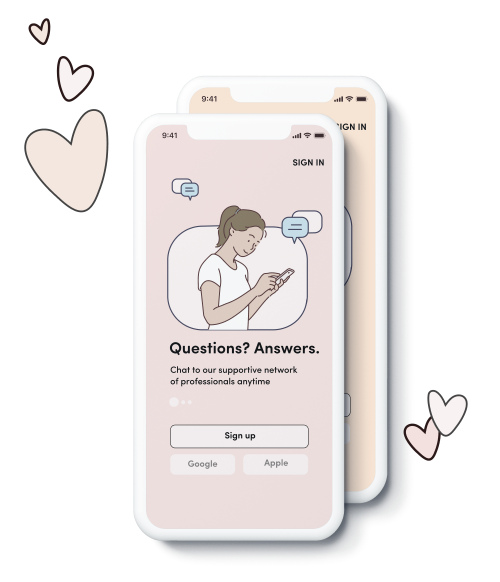






Problem Statement:
First-time mothers experience significant challenges in accessing professional support and care in the early stages post-partum, especially late at night when traditional services are often unavailable.
Solution:
The recommended solution was designing a mobile application where new mothers could chat with health professionals around the clock to provide them with support and reassurance to fit with their busy lifestyle.
Roles
Team
Understanding the challenges of first-time mothers

As a team, we interviewed 23 first-time mothers to understand
their experiences throughout pregnancy and their subsequent
transition to motherhood. The interviews were conducted via video
call on Zoom and ranged in duration from 30 minutes to an hour. In
these interviews, we sought to understand their lived experiences
throughout this period.
 After transcribing the interview recordings, findings from the
user research were drawn out through coding and thematic analysis.
We coded the data by the following categories;
expectations/surprise, time management, personality change
information, support, challenges, technology, negative
experiences, and physical activity.
After transcribing the interview recordings, findings from the
user research were drawn out through coding and thematic analysis.
We coded the data by the following categories;
expectations/surprise, time management, personality change
information, support, challenges, technology, negative
experiences, and physical activity.
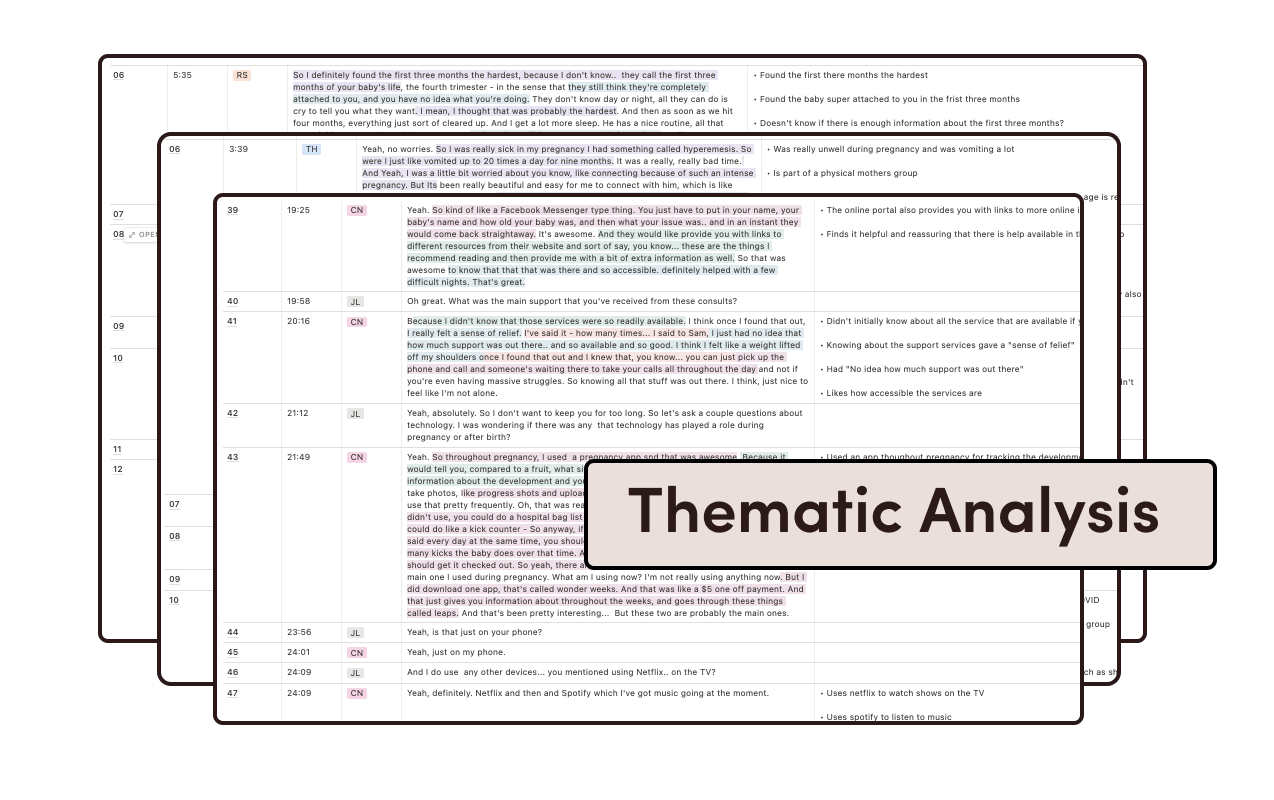 From the thematic analysis, three key findings emerged. They
reveal that first-time mothers find the first six months
post-partum as the most challenging time they experienced as
first-time mothers. This is caused by breastfeeding challenges
alongside a lack of social and professional support available late
at night when it is most needed. We also found that smartphone
applications are the most accessible technologies for first-time
mothers, and there is a need to provide streamlined healthcare
information around the clock.
From the thematic analysis, three key findings emerged. They
reveal that first-time mothers find the first six months
post-partum as the most challenging time they experienced as
first-time mothers. This is caused by breastfeeding challenges
alongside a lack of social and professional support available late
at night when it is most needed. We also found that smartphone
applications are the most accessible technologies for first-time
mothers, and there is a need to provide streamlined healthcare
information around the clock.
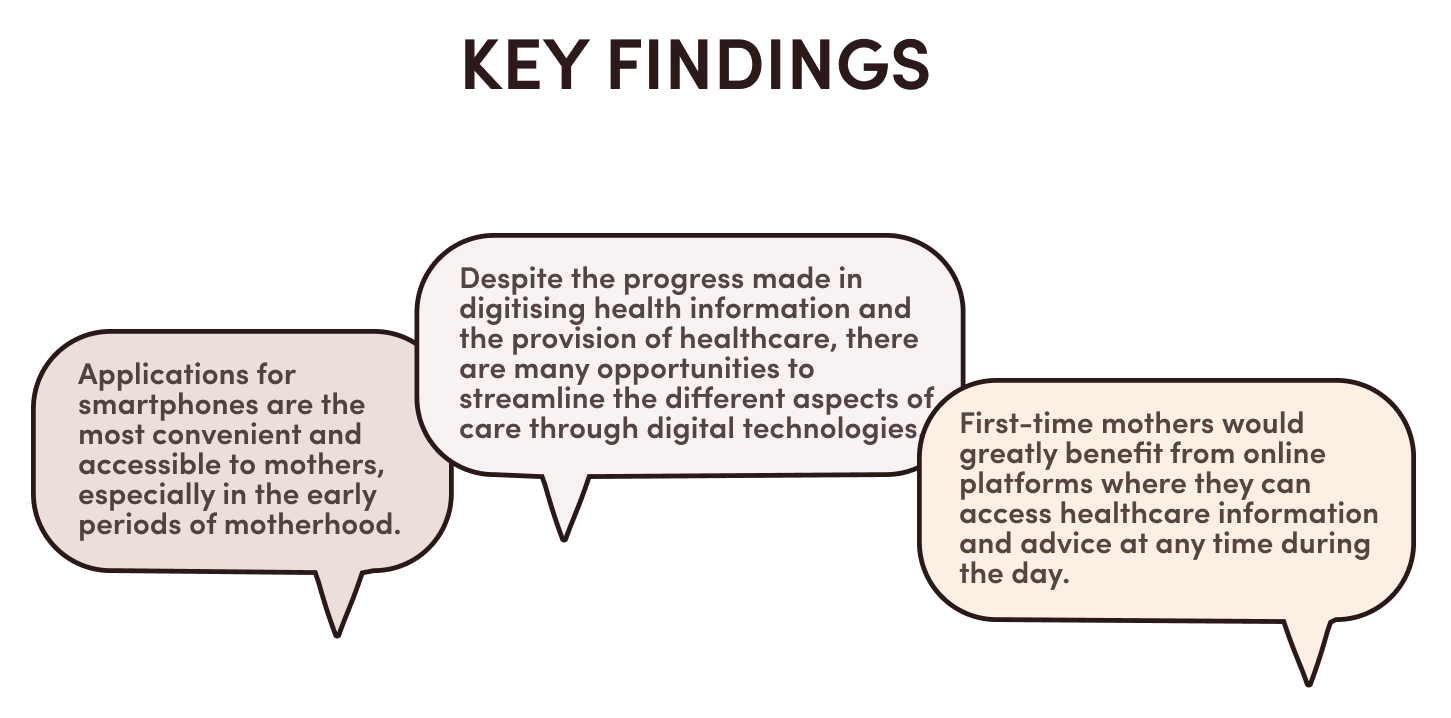
Understanding our first-time mothers
After distilling our user research, we defined one primary user
type, as seen in the persona below. Our user, Amy, is a
32-year-old mother to baby Eliza. She is on maternity leave and is
the primary caregiver after giving birth five months ago.
Throughout the day, she cares for her baby while her partner is
working.
Amy wants to be the best mother she can be
however, she worries about not knowing everything about parenting
and often needs access to reassurance and support late at night.
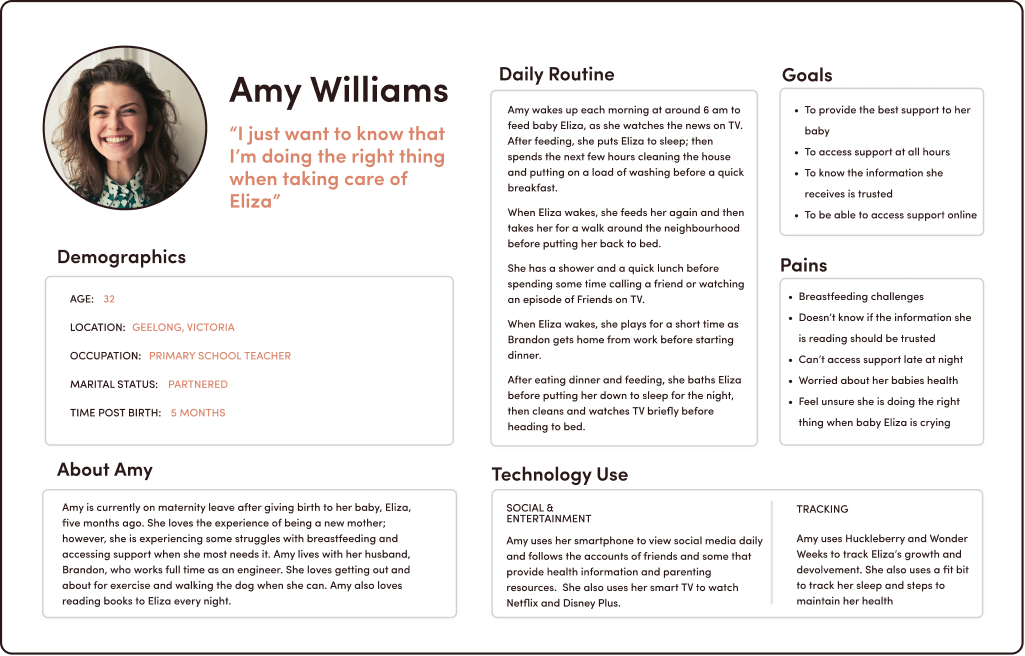
User Journey Mapping
After understanding the challenges and issues facing first-time
mothers, we understand that they would greatly benefit from online
platforms where they can access healthcare information, advice,
and in turn, reassurance at any time during the day.
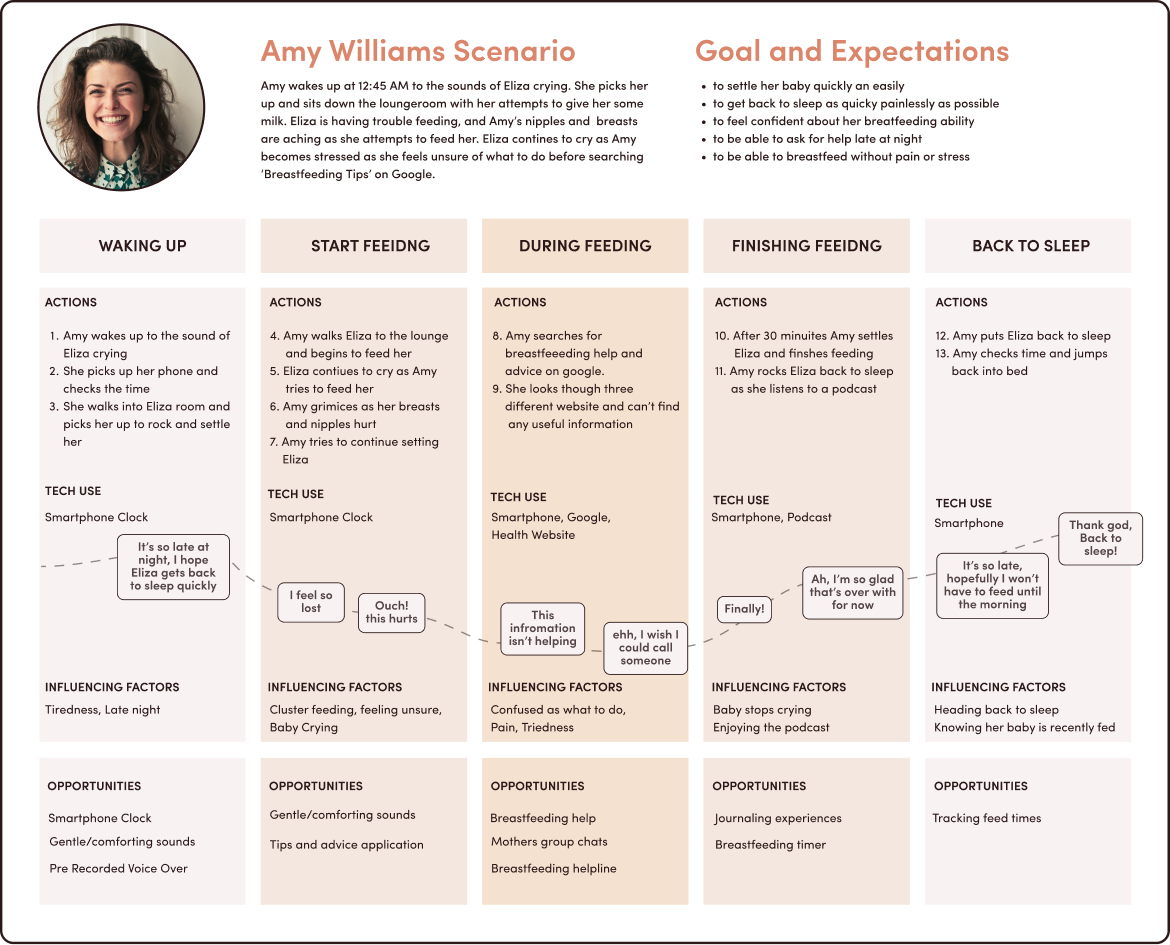
Based on our user research and design artifacts I began to ideate
solutions through feature prioritisation to consider what could
best support first-time mothers, especially late at night.
Through the ideation session, feature prioritisation and
subsequent sketching, I converged on developing a mobile
application that enables first-time mothers to be matched with
trusted health professionals in a real-time text chat, so they can
access advice and ask questions at all hours of the day. This
would we allow first-time mothers to access advice when their
personal support networks are unavailable.
Feature Prioritisation

Rapid Low-Fidelity Prototyping
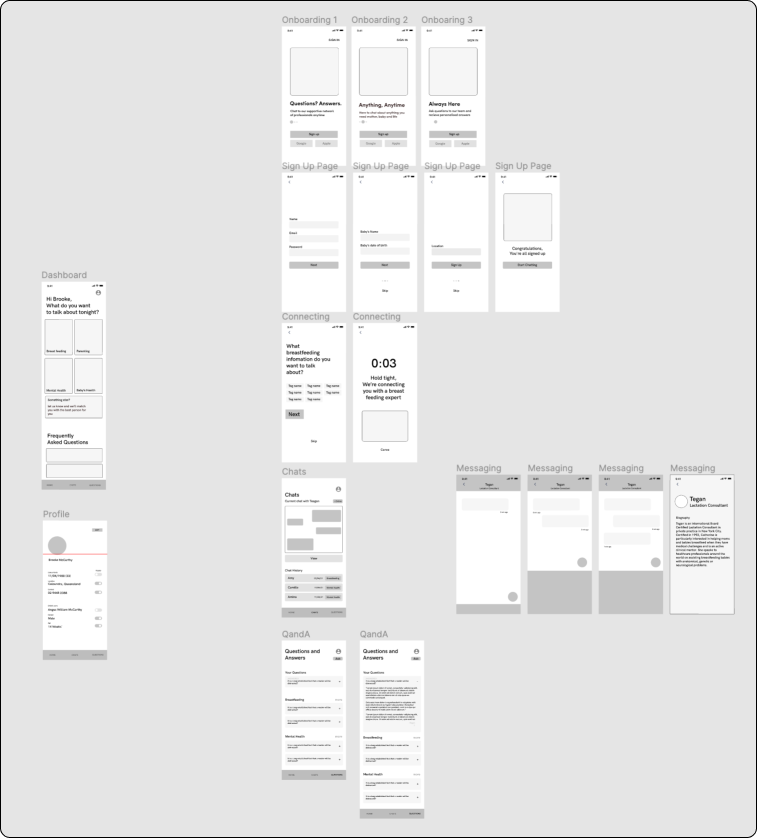
After defining the app's key features, I began the process of rapid low-fidelity prototyping. This validated the key concepts, layouts and user flows - this low-fi prototype comprised the primary functionality, including onboarding, chat, Q&A and FAQ.
Mid-fidelity Prototype
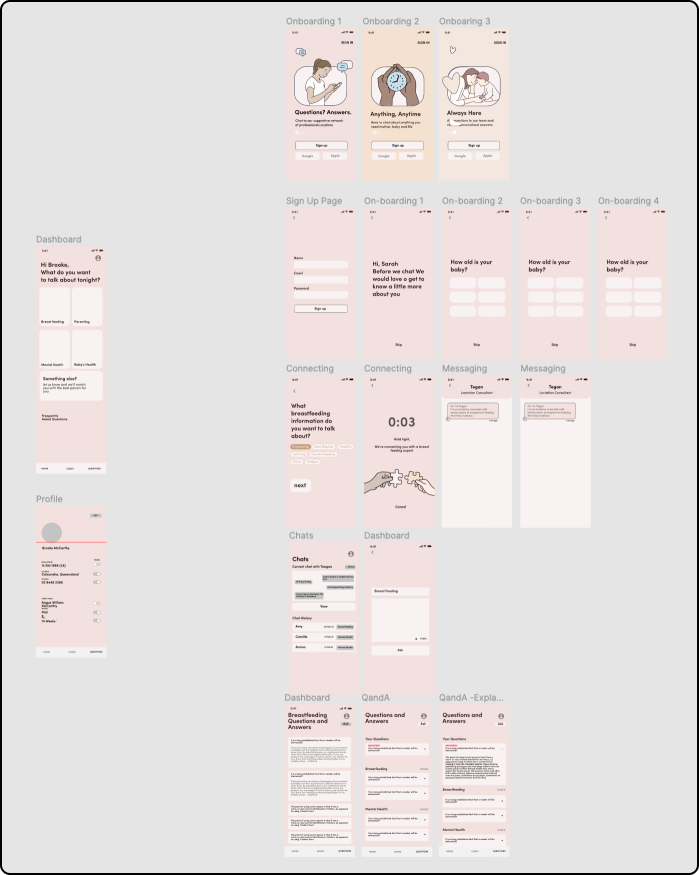
The mid-fidelity prototype was designed to provide a working design to test for usability. This prototype allowed for testing creative ideas and visual design, alongside more functional elements before conducting usability testing.
Usability Testing
I conducted remote usability testing with five participants via video call to test the prototype. In these sessions, I asked the participants to complete a series of tasks using the 'talk aloud' approach. I iterated upon the prototype between each testing session to resolve any major usability issues.
Usability Testing Tasks
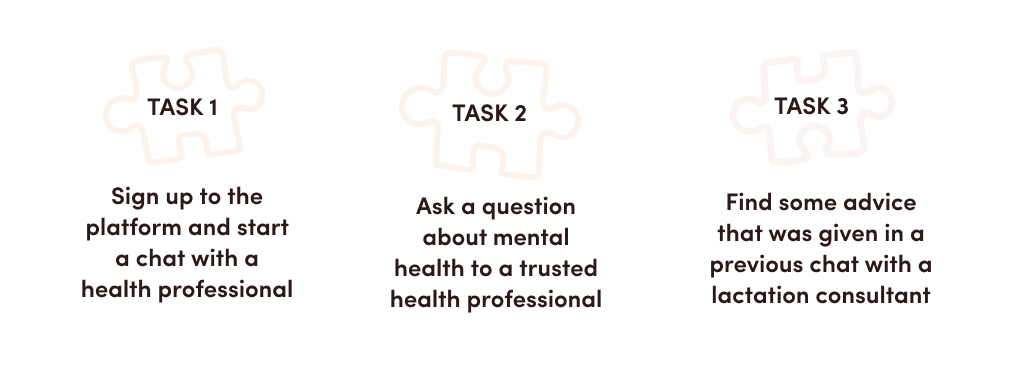
Usability Testing Participants

Iterating on the Design
After evaluating and tabling the results from the usability testing, I’ll continue to refine the prototypes before developing a high fidelity iteration with refined copy and visual design to retest with first-time mothers.
Understanding Lived Experiences
This project highlights the importance of user research in understanding your users as I was surprised by first-time mothers' unique needs and desires - something that I had no prior knowledge or exposure to.